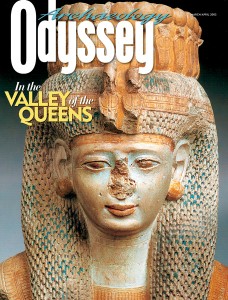Funerary Texts in Egyptian Royal Tombs
Sidebar to: “Place of the Beautiful Ones”
Two of the more important Egyptian funerary texts, the Amduat (That Which Is in the Netherworld) and the Book of Gates, chronicle the sun god’s journey through the netherworld on his solar barque. Both are divided into 12 sections corresponding to the twelve hours of the night. (The ancient Egyptian day was divided into 24 “variable” hours, which changed in duration depending on the season.) The Amduat, which is the earlier of the two, appears for the first time in tombs dating to the second quarter of the 15th century B.C.1 Shortly thereafter, in the third quarter of the 15th century,2 the Amduat appears in conjunction with the Litany of Re, a text that discusses the 75 forms of the sun god and associates the king with that god.3
The Book of Gates first appears in the Theban tomb of Horemheb (1319–1292 B.C.), where it was used to the exclusion of other funerary texts. Horemheb’s successor, Ramesses I (1292–1290 B.C.), the first king of the 19th Dynasty, also used the Book of Gates exclusively for decoration in his tomb. From the time of Seti I (1290–1279 B.C.), however, the Litany of Re, the Amduat and Book of Gates were all employed together in kings’ tombs. Other compositions, such as the Book of the Heavens and the Book of Caverns, were later added to the repertoire of Ramesside kings’ tombs.
Already a library member? Log in here.
Institution user? Log in with your IP address.

